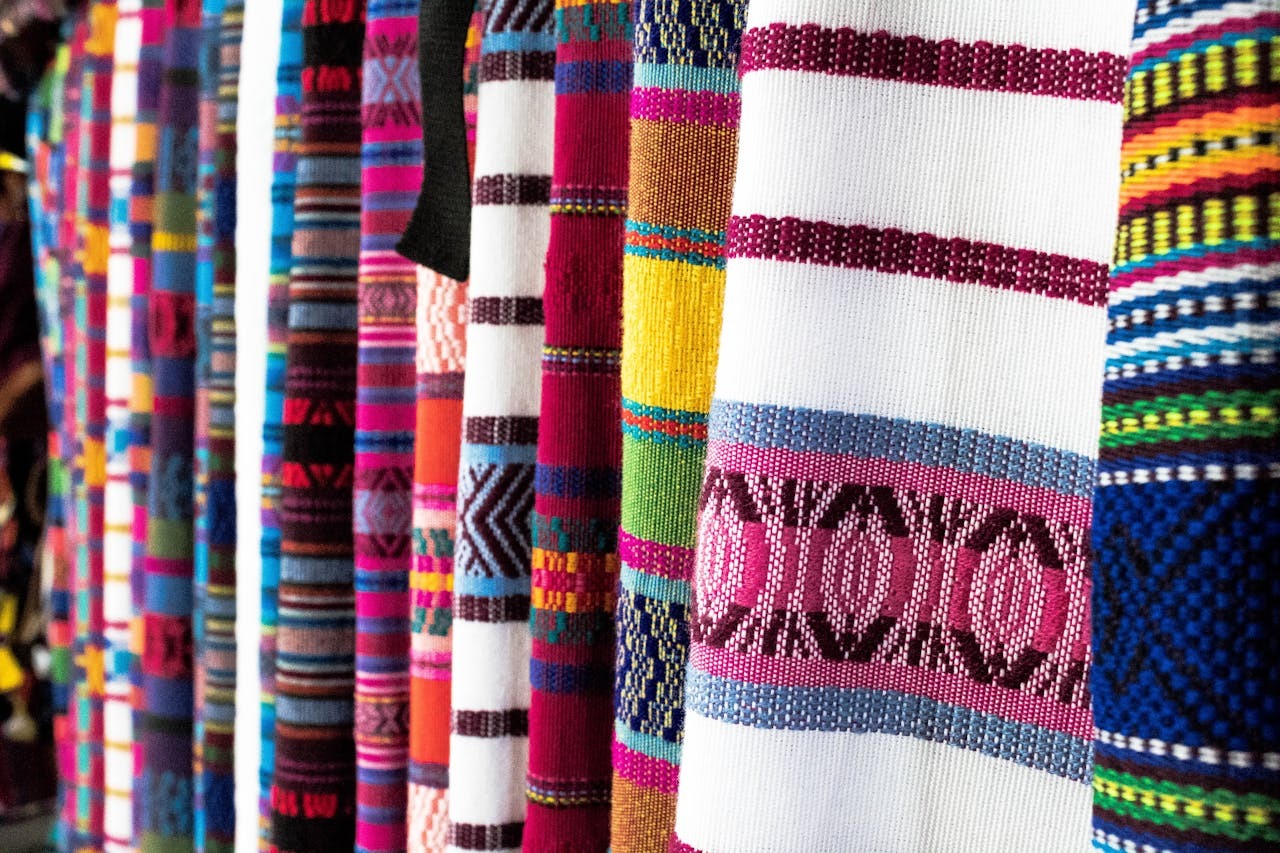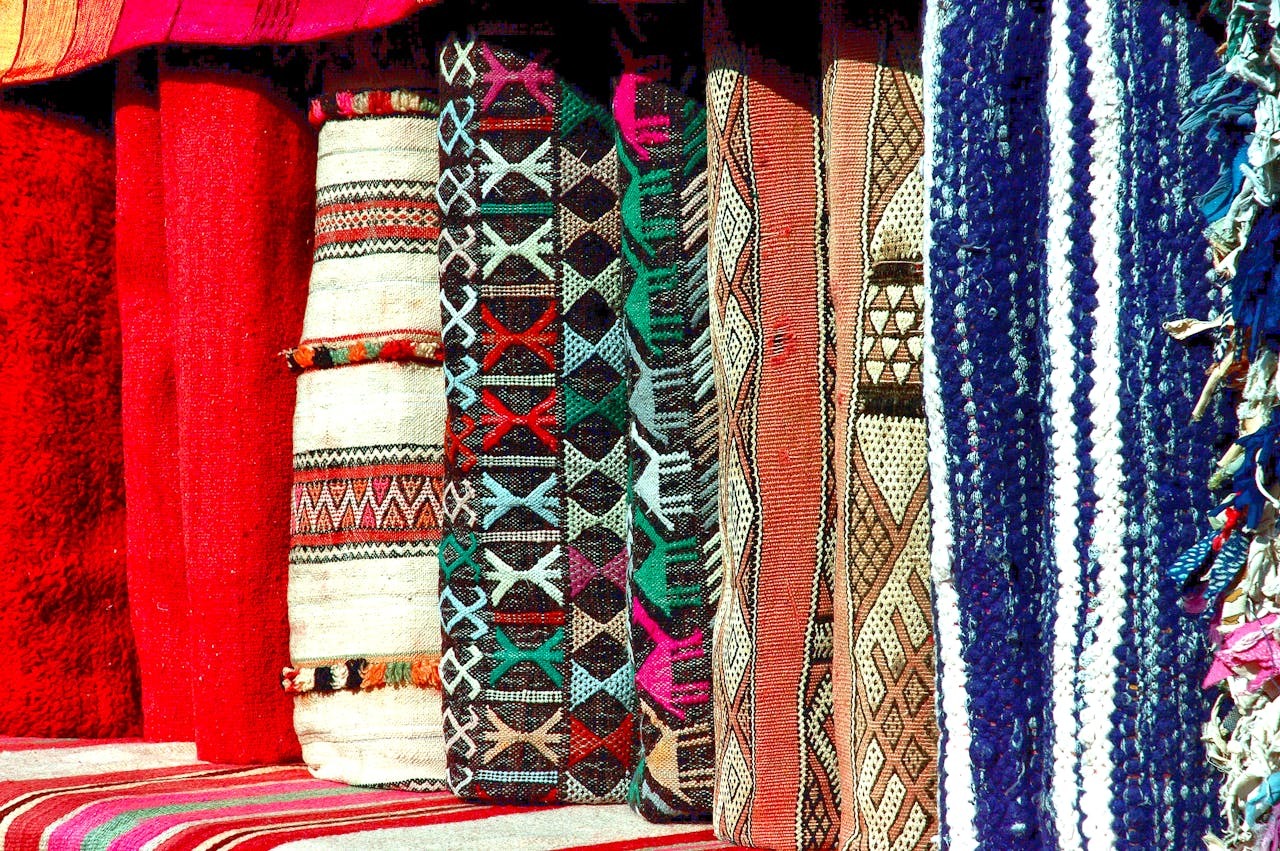From Kente to Kitenge: Meaning Behind Africa's Most Iconic Fabrics - The Cultural Significance Explained
Danny Duod on 7th May 2025
African fabrics are more than just beautiful textiles. They tell stories of culture, history, and identity across the continent. Each pattern and colour holds deep meaning, passed down through generations.

Kente, Kitenge, Ankara, and other iconic African fabrics represent cultural heritage, social status, and personal expression through their unique designs and production methods. These textiles have travelled from traditional villages to international fashion runways, showing their enduring appeal and significance.
Today, these fabrics continue to evolve while maintaining their cultural importance. They bridge the gap between ancient traditions and modern expression, serving as powerful symbols of African identity worldwide.
The Cultural Significance of African Fabrics

African fabrics serve as vibrant repositories of history, identity and cultural values across the continent. These textiles transcend mere decoration to become powerful communicators of social standing, personal milestones and spiritual beliefs.
Symbolism in Cloth and Patterns
African textiles contain rich layers of meaning embedded in their patterns and motifs. The Adinkra symbols of Ghana, for example, represent concepts like wisdom, strength and unity through visual elements printed on cloth.
Colours carry specific meanings that vary by region. Red often symbolises vitality and sacrifice, while white frequently represents purity or spirituality. Blue may signify peace or harmony in many traditions.
Animal motifs appear frequently with significant cultural weight. The crocodile symbolises adaptability in Akan culture, whilst birds might represent freedom or communication with ancestors.
Geometric patterns often contain mathematical precision that reflects cultural values of balance and harmony. These designs frequently connect to cosmological beliefs and traditional knowledge systems.
Ritual and Ceremonial Uses

Specific fabrics mark life's pivotal moments across African societies. In many West African traditions, specially woven cloths envelop newborns, whilst other designated textiles shroud the deceased.
Marriage ceremonies feature particular fabrics that symbolise the union. In parts of Nigeria, the bride often receives Aso-oke cloth to signify her new status, whilst Moroccan wedding blankets incorporate protective symbols for the couple.
Religious ceremonies utilise specific textiles as spiritual tools. Priests and priestesses in Yoruba traditions wear white cloth during ceremonies to honour Obatala, the creator deity associated with purity.
Healing rituals in various communities involve specially prepared fabrics. Traditional healers in Mali and Senegal may use indigo-dyed cloths believed to possess protective qualities against illness and negative energy.
Status, Identity, and Communication

Cloth serves as a visible marker of social standing across the continent. Royal families in places like Cameroon and Uganda wear particular patterns reserved exclusively for monarchs and their close relatives.
Age groups and social roles become immediately identifiable through textile choices. Elders in many societies earn the right to wear specific cloths that younger community members cannot access.
Fabrics communicate personal achievements without words. In Ethiopia, warriors traditionally earned the right to wear particular cotton garments after demonstrating courage in battle.
Community identity manifests through regional textile traditions. The Ndebele of South Africa use distinctive geometric patterns that instantly identify their cultural heritage, whilst Maasai red cloth serves as an immediate visual signature of their community.
Historical Origins of Iconic African Fabrics

African textile traditions span thousands of years, evolving through ancient indigenous practices, trade networks, and later colonial influences. These fabrics tell stories of cultural identity, status, and historical developments across the continent.
Ancient Textile Traditions
Archaeological evidence reveals textile production in Africa dates back to at least 5000 BCE. Ancient Egyptians cultivated flax for linen production, while in West Africa, cotton cultivation and weaving emerged around the 11th century.
Early textile traditions relied on local materials and techniques. In Mali and Burkina Faso, the Dogon and Mossi peoples developed mudcloth (bogolanfini), using fermented mud to create intricate patterns on handwoven cotton. This process remains largely unchanged today.
Kente cloth originated with the Ashanti and Ewe peoples of Ghana. Initially reserved for royalty, these colourful strips were woven on narrow looms and sewn together. Each pattern and colour combination carries specific cultural meanings.
The Influence of Trade and Migration
The trans-Saharan trade routes dramatically transformed African textile traditions from the 8th century onwards. Arab merchants introduced new techniques and materials, including silk threads and complex dyeing methods.
East African coastal regions developed unique textiles through Indian Ocean trade networks. The kanga cloth emerged in the 19th century, featuring bold colours and Swahili proverbs. These rectangular cloths became important communication tools and fashion statements.
Migration within Africa spread techniques like adire indigo dyeing from Nigeria. This resist-dyeing method creates stunning blue patterns that became associated with Yoruba identity. Similarly, Tuareg indigo techniques travelled throughout North and West Africa, creating the distinctive blue garments worn by desert nomads.
Colonial Impact on Local Textiles
European colonisation brought dramatic changes to African textile traditions in the 19th and 20th centuries. Dutch companies created "African prints" or "wax prints" for Indonesian markets, but these fabrics found unexpected popularity in West Africa.
Factory-produced textiles threatened traditional weaving economies. Many communities adapted by incorporating imported materials while maintaining cultural patterns. The iconic kitenge fabric evolved during this period, blending European manufacturing with African aesthetic preferences.
Colonial borders disrupted traditional trade networks, isolating some textile traditions. However, resistance to colonial rule often involved textile symbolism. In South Africa, the distinctive shweshwe fabric, originally introduced by European missionaries, was embraced and transformed into a symbol of indigenous identity and resistance.

